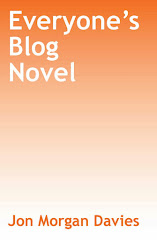I was expecting more of an urban planning and studies work, but the first part of this text—and indeed, the last part also—is more about human psychology. Vanderbilt does get to urban planning eventually, as I would find, and once he does, the book became more interesting to me. But I can see why he started with psychology, because it is after all the psychology that affects so much of how and why we plan our roads the way that we do. That said, the book as a whole was fairly unsettling, insofar as it made me realize just how unsafe driving in general is. I wish I could get away without it, but even as I might wish that, if we deal with vehicular traffic at all, even as pedestrians, we're in danger (and perhaps even greater danger).
I might summarize this book as being a set of counterintuitive findings about roads and driving, which Vanderbilt seems to be set on presenting. That is, of course, what makes the text as interesting as it it. I'll note just a few of the odd facts that he runs down for us:
Should you merge early or late? That is one of the opening questions. I'd say I'm usually an early merger, as I don't want the stress of trying to get into the correct lane later. The issue with merging early, though, is that you're failing to use the full available space of the road. So the key would be to merge late? Vanderbilt eventually shows that the best thing to do is to simply move forward in whatever lane you're in, merging (if you must) when time arises. This isn't exactly late merging, because if you happen to be in the lane to which people are merging, you shouldn't shift to the other one to try to speed past other cars—that creates other dangers.
Have you ever wondered why insects don't get into traffic jams? I hadn't given it much thought, until Vanderbilt brought it up. Ants, I guess, have a whole system laid out where lines of traffic go more heavily in certain directions and so on. But the advantage is that they have a team goal. When we drive, it's usually each vehicle for itself. This encourages behavior that usually ends up hurting everyone. He comes back to this when talking about searching for car spaces, which I'll come back to as well. The other insect he discusses is the locust, which really is kind of every insect out for itself. The insects at the front of the pack eat up the food; at the back, the insects eat the insects that are in front of them, given that the food is gone. Wow! What a life.
So parking spaces. When they are scarce, do you sit and wait for a spot to open up or drive around looking for one? Women apparently are more likely to do the former, men the latter. Both add to congestion. Men are also more likely to park further away on the central aisle and just walk, while women are more likely to try to snag a closer spot, even though it might take more time. I am definitely a man in that regard, though I wouldn't say I just park on the central aisle as far back as needed. I usually park farther out so as not to have to deal with cars around me, but I'll often go to the side.
Congestion also results from out tendency to be in for ourselves, the way, say, that if one had a community pasture, there are few conditions to discourage overgrazing. What I mean is that if there is scarcity, the only way to avoid such is to cooperate. But if the system is set up as first-come first-serve, cooperation doesn't really pay off for the individual user. In such a system, even if the pasture is overgrazed, I'm better off sending my sheep there and at least getting some feed than not even bothering. And so it is with spots on a highway or in a parking lot. I could choose to drive a route that is an hour longer and twenty miles out of my way, but if I do that, I'm helping others more than myself. If I can squeeze onto the highway, even if I only save a half hour (and slow it down for everyone else), it's still a net gain for me. This is one reason that GPS tracking used to filter cars to less traveled routes in heavy traffic times probably won't work—the other being that travel times are very dynamic (so a route might slow or speed precipitously in a given short period of time). It's also why bigger roads usually don't result in less traffic, as people congregate toward that shared pasture.
An interesting chapter revolves around how more dangerous roads are actually, statistically, usually safer for driving. There are fewer fatal crashes, for example, in heavy traffic. After all, everyone is going slower! Here Vanderbilt gets deep into urban planning, discussing how some cities have actually created zones within the city where driving is actually more difficult, where cars are forced to slow, where there is more mixed use of streets. This restores the vitality of such zones of the city while also slowing cars down—all this without speed bumps and other awkward traffic inventions, because cars now can't treat the street like a thoroughfare to be simply passed through as quickly as possible.
Returning to psychology, Vanderbilt discusses how driving habits differ in different locales and how safer cars often lead to more dangerous driving. That's the whole counterintuitive aspect to virtually everything revolving around traffic. Bigger roads lead to more traffic, not less. Safer cars lead to people driving less safely. It seems there's a kind of equilibrium that we're set to return to, no matter how much we might try to compensate.





